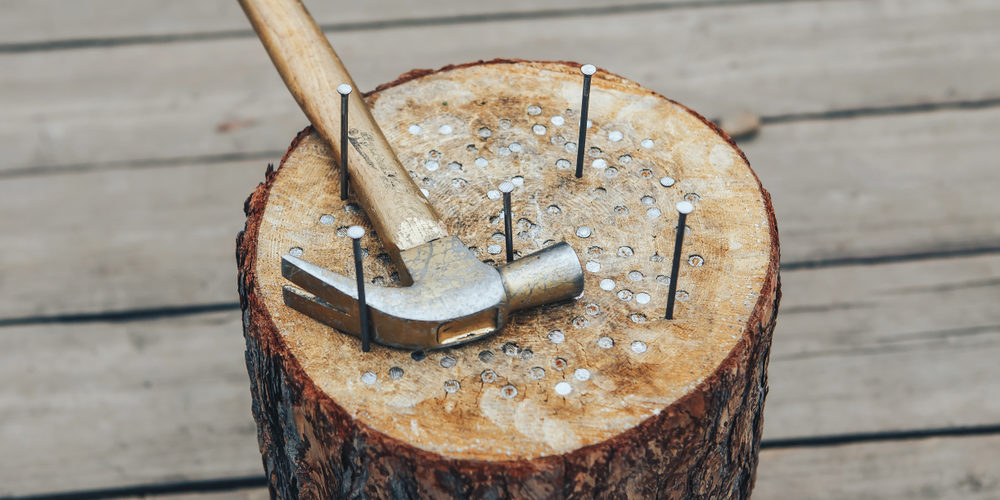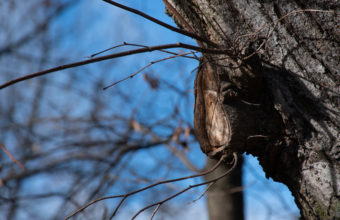Using copper nails to get rid of a tree stump is a method that involves slowly poisoning the tree over time.
Here’s a general outline of how to use copper nails to kill a tree stump…
- Prepare the Stump – Ensure that the tree stump is cut as close to ground level as possible. Use a chainsaw or hand saw to cut the stump as flat as you can.
- Drill Holes – Using a drill with a drill bit slightly smaller than the copper nails, make several holes in the top and sides of the stump. The holes should be about 1-2 inches deep.
- Insert Copper Nails – Insert copper nails into the drilled holes. Hammer the nails firmly into the wood so they are flush with the surface of the stump.
- Repeat the Process – Depending on the size of the stump and the effectiveness you desire, you may need to add more copper nails. The idea is to ensure there are enough copper nails to distribute the poison throughout the stump.
- Wait – Over time, the copper nails will release copper ions into the tree stump, which can poison the tree and inhibit its ability to grow. This process can take several months to a year or more, depending on the size and health of the tree.
- Monitor Progress – Keep an eye on the tree stump over time to see if it shows signs of decay or dieback. You may notice wilting leaves, lack of new growth, or visible decay in the stump.
- Remove the Stump – Once the tree stump is dead and decayed, you can proceed with removing it from the ground. This may involve digging around the stump and using tools such as a shovel, axe, or pry bar to break it apart and remove it in pieces.
- Dispose of the Stump – Properly dispose of the dead stump and any remaining debris. You may need to cut it into smaller pieces for easier disposal or recycling.
While copper nails can help kill a tree stump, this method may take a considerable amount of time, and success is not guaranteed. Using copper nails to kill trees may not be legal in some areas, so be sure to check local regulations before attempting this method.






